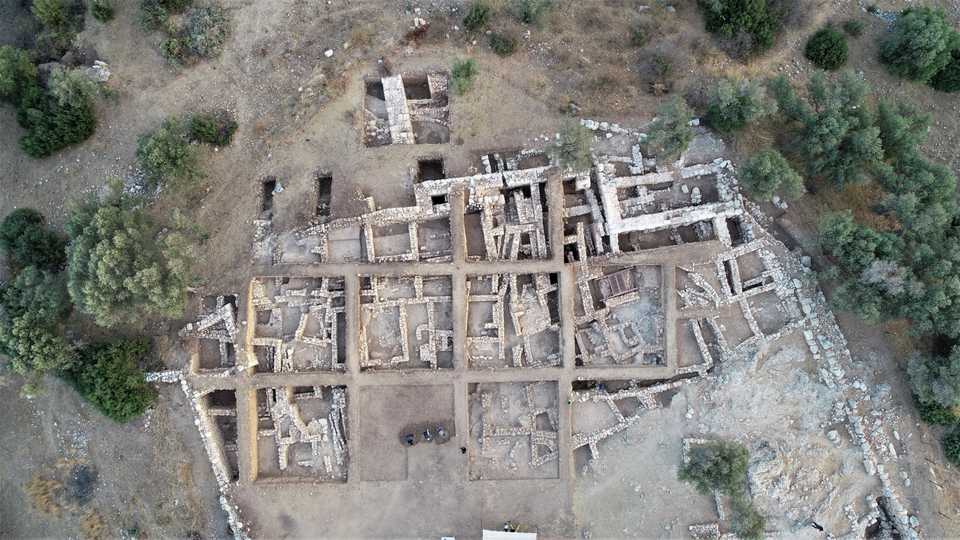“The Patara excavations began in 1988,” excavation leader Havva Iskan Isik says. “Sometimes we have a hard time believing it’s been 32 years.”
Iskan has been involved with the excavations since day one, and became excavation leader in 2009. She helped form the archeology department at the Antalya Akdeniz University in 1990 and is still a professor there.
Asked what they have found so far in Patara, Iskan starts listing the buildings first: a theatre, the prytaneion (the seat of government in ancient Greece), the assembly building, the port avenue, the lighthouse, the early Tepecik settlement, the Tepecik necropolis, the graveyard church, the Surici church, the Markia temple graveyard, the Patarean Monument of the Roads (Monumentum Patarense), the Kursunlu cistern, the main water depot, three water distribution stations, half of late antiquity walls and bastions, about sixty underground tombs, sarcophagi and many other kinds of graves.
“As you can see,” Iskan says, “these structures bear witness to a long, intense process with a dedicated and detail oriented team.” She points out that the artefacts they have found can be numbered by the thousands. “The artefacts that can be inventoried are currently on display at Antalya and Demre museums,” she adds.

The history of Patara goes back millenia, and Iskan says two prehistoric finds are especially significant. One is a baked clay figurine from BCE late 4000s-BCE early 3000s. The other is an original find from 2020: on a flat stone axe, a drawing made with red paint. “Comparing it to similar rock drawings, experts date it to the Early Chalcolithic Era, that is, BCE 5700-5600 and 4900-4800.” She calls it “the earliest confirmed artefact in coastal Lycia.”
Yet, she says, there are other stone axes in different forms found in Patara and other Lycian settlements that are possibly from even earlier dates. “Indeed, the nearby antique town Tlos and Girmeler Hoyuk excavations have revealed obsidian from Melos Island. They could only have arrived here via the Patara Port, so it may be possible to consider Patara’s history dating back to BCE 8th millenia.”
“Patara has been one of the most important ports in the northern Mediterranean for millenia,” Iskan says. “Livius has called it ‘caput gentis Lyciae’, that is, the head of the Lycian race. Patara has been the capital of the Roman Lycia and the states of Lycia and Pamphylia.”
Iskan says the town has a lighthouse and is significant due to the history of religions. Apollon’s oracle is here, and St. Leo, st. Paregorius and St. Methodius were martyrs from this city. “The world’s Father Christmas, St. Nicholas, is from Patara. And the Patara excavations have shown that the Lycian civilisation is an ancient, local Anatolian civilisation with all its aspects.”
Iskan says that in addition, “Patara’s unique cultural heritage is enveloped with a unique natural habitat. Sand dunes, sand lilies and caretta caretta turtles are but a few elements of these natural riches.”
2020 was declared the “Patara Year” in Turkey. Iskan says she is grateful to the Minister of Culture and Tourism Mehmet Ersoy and President Recep Tayyip Erdogan. “With this momentum, many projects have begun in Patara, for example the lighthouse and the restoration of the first telegraph station of the Otoman Empire,” she says. “And despite the pandemic, within a few months there were a record number of visitors.”
The Nero Bath
Mustafa Kocak studied archaeology in Germany and has been a part of the Patara excavations since 2010. He is an assistant professor at Antalya Bilim University as well as a deputy dean there. He is an assistant leader of the excavation.
Kocak is responsible for the excavations at the late antique walls south-southeastern part as well as the Nero baths. “The late antique wall is completely built from materials from earlier buildings,” he says. “It surrounds about one fifths of the town, with 13 towers reaching a height of 14 metres.” Kocak says they estimate the walls to be from the 4th or 5th century.”
“I’m also responsible for the Nero bath,” he says. “The bath takes its name from an inscription on a door between the frigidarium (cold) and tepidarium (warm). From this inscription we find out not only who built the bath, but when. For the inscription to be placed above the entrance door, the bath must have been completed before Nero’s death in 68.”
“The inscription says the state consul Sextus Markius Priskus had the bath built for Nero, with financing coming from taxes.” The Nero bath is built on 1,134 sqm land.

The women’s quarters
Erkan Dundar is an archeologist who completed his postdoctoral studies in the US. He is an assistant excavation leader at Patara and an instructor at Akdeniz University. “I’m responsible for the excavations at Tepecik settlement in Patara,” he says, “I’ve worked there for eight years.”
The Tepecik settlement is special because it’s where the earliest findings and architectural sites in Patara were found so far. The earliest findings point to BCE late 4000s. “Thanks to our work in the Tepecik settlement, we find that the area was fortified at the latest BCE seventh century, especially in BCE 4th and 3rd centuries, Alexander the Great and Hellenistic Egyptian kingdom of the Ptolemaios had built garrisons there, in that order.”
Asked about the women’s quarters found in the Tepecik settlement, Dundar says “in 2020, a women’s quarters determined to be 2400 years old, was unearthed along with its accessories.”
These rooms, known as gynaikonitis, were located away from the residence’s entrance. “In antiquity, the noble women carried out their daily activities in these rooms,” Dundar says. “Built in order to minimise contact with men from outside the family, this is where women nursed their children, wove thread and wool, and made fabric.”
“In addition to the women’s chambers, adjacent to this room we found a kitchen,” Dundar explains. “We found many artefacts related to cooking, such as casseroles, amphoras and pitchers,” he concludes.










Discussion about this post